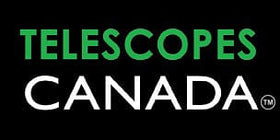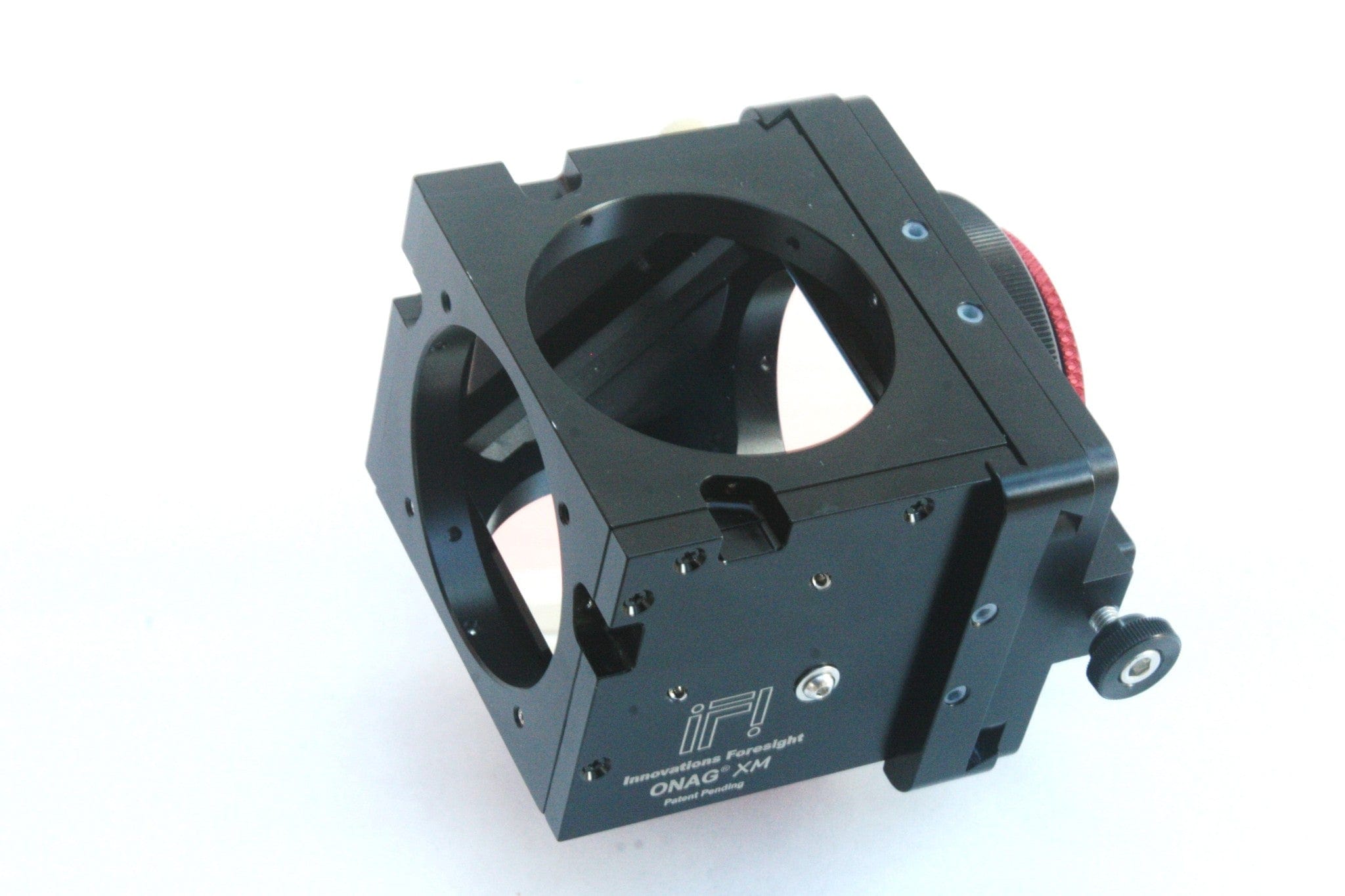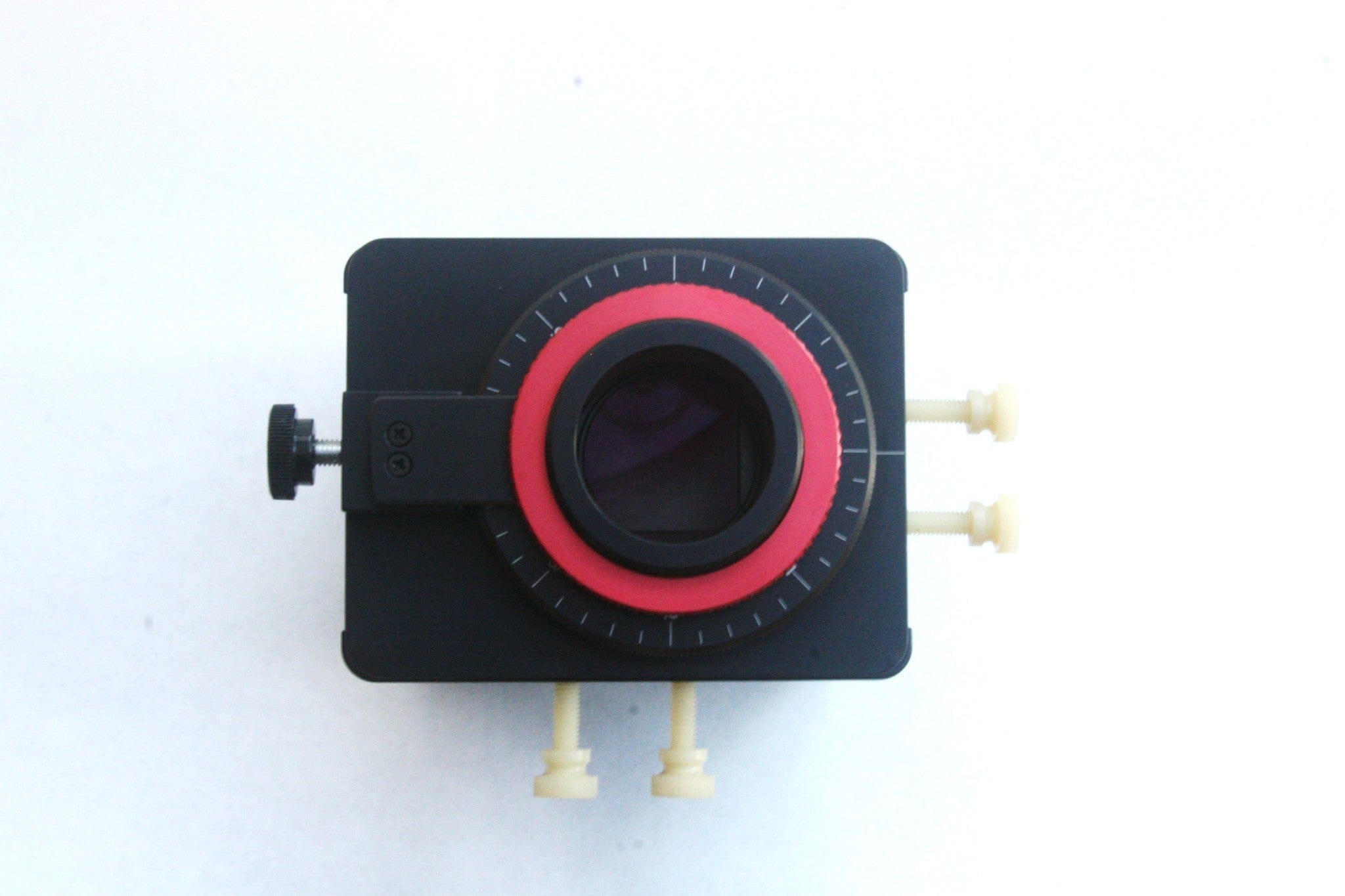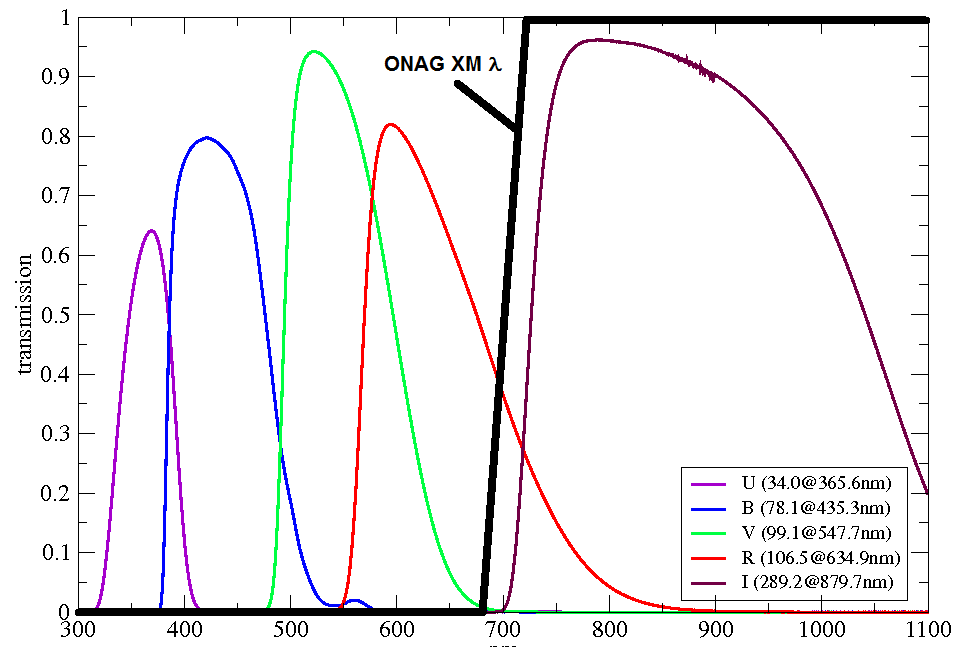For exo-planet transit and photometric works with UBVRI filter system or equivalent. The ONAG XM Lambda is optimized for full frame sensors, up to 50mm diagonally.
New - Using the full frame for guiding (not just stars!) and also focusing in real time: https://www.innovationsforesight.com/education/full-frame-guiding-focusing/
Innovations Foresight is also in a beta test phase for our SkyWave (SKW) AI based wavefront sensing and collimation tool. The basic version will be integrated with SKG, here is a link to the topic:
https://www.innovationsforesight.com/education/aitelescopecollimation/
Stop the frustration of flexure and small aperture guide scopes, or hunting for that magic star in an off-axis guider's tiny field of view at the distorted edge of the field of view and start using your main scope's full field of view to make guiding simply work the way it should - effortlessly.
This is the ONAG XM Lambda unit only. Please review ONAG accessories for standard spacers and adapters.
The ONAG XM Lambda is the new full frame (up to 50mm diagonal) member of the On Axis Guider product line. It has been designed for photo-metric work, such as exo-planet transit.
Here are some related papers:
Achieving High Precision Transit Observations with Sub-meter Telescopes, Dennis M. Conti
Use of On-axis Guiding toReduce the Effects ofPolar Misalignment on Field Rotation, Gaston Baudat
This version of the ONAG XM has a transition wavelength at 700nm where the I band filter starts in the photo-metric UBVRI filter system.
This design allows use of the ONAG with two cameras with UBVRI filters,. The imaging camera for the UVBR filters and the guiding camera for the I-band.
We recommend using the astigmatism corrector in this context. Accessing both the visible and the I-band simultaneously allows monitoring exo-planet transits in two bands for detection of false positives, hence double stars, without drooping the sampling rate by changing filters.
It is fully compatible with the ONAG XM therefore you can use the same adapters and spacers than for the XM version.
When used with FocusLock software it offers an unique solution for guiding and continuous real-time auto-focus using SharpLock patent pending technology. There is no need to interrupt your imaging session for any periodic re-focusing runs anymore.
SkyGuide/SkyGuard full frame software offers a total new approach to guiding without any specific guide star for guiding and focusing.
The ONAG XMλ is equipped with a guider helical focuser for fine focus (800 microns for 360 degrees of focus ring rotation) associated with a new X/Y stage for the guider port (GP). This stage has been engineered to support larger, and heavier, guiding cameras with large field of view (FOV) for remote operations. The ONAG XM Lambda guider focuser supports APS-C chips with diagonal up to 28mm, such as the popular KAF8300, or large CMOS sensors.
A large guider FOV provides access to many guide stars without using the integrated ONAG X/Y stage. To learn more about Innovation Foresight's patented ONAG technology please visit their eduction page.
The ONAG XM Lambda scope and imaging ports (SP, IP) use a 59mm dovetail system for rigid connections with the scope imaging train (focuser, rotator, focal reducer, etc) and imaging/filter wheel equipments. The ONAG XM Lambda guide port uses a T2 (M42 x 0.75mm) male thread for connection to a guider camera.
For ONAG backfocus calculation and Excel spreadsheet click here.
To fit your needs Preciseparts.com provides custom adapters for any of the ONAGs.
For fast scopes with f/#<8 and/or large central obstructions (>35%) we recommend considering the astigmatism corrector. When used with the continuous real time auto focus software FocusLock (FL) the corrector can be rotated to dial back some controlled level of astigmatism.
Since SkyGaurd doe snot use any centroid it is immune to astigmatism and therefore can work with most scope without the corrector.
Fell free to contact Innovations Foresight for any advice and support.
Watch the ONAG technology video below:
Features:
- Finding a guide star has never been easier!
- For your best images yet, ONAG Features:
- Wide FOV for your guider with the integrated X/Y stage.
- No differential flexure even with long focal lengths.
- NIR guiding for reduced seeing & a smooth tracking.
- No rotation needed, enjoy reusing your flat frames.
- No filter in the way, ideal for narrow band imaging.
- Sharp images with SharpLock real time auto-focus software.
- No periodic refocus anymore, save time with SharpLock.
- Light weight (0.8 Kg) and much more…
Specifications
| Product Specifications: | without extension tube |
| Over all dimensions: | 123 x 110 x 70 mm |
| ONAG® weight: | 850 g |
| Imager back focus: | 68 +/-2 mm |
| Guider back focus, half way extended: | 101 +/-1 mm |
| Imager chip diagonal: | Up to 50mm (full frame, 36x36mm, …) |
| X/Y stage, full X travel: | 37 mm |
| X/Y stage, full Y travel (excepted low profile): | 24 mm |
| X/Y stage, maximum off-axis offset: | 22 mm |
| X/Y stage maximum exploration circle: | 44 mm |
| Guider focuser type: | Helical |
| Guider focuser travel: | Minimum 9 mm |
| Scope port: | Dovetail 59mm |
| Imager port: | Dovetail 59mm |
| Guider port: | T-thread (M42 x 0.75) |
| Dichroic beam splitter coating: | Fully multi-coated |
| Dichroic beam splitter protection (both sides): | Optical grade quartz |
| Typical dichroic beam splitter reflection (visible): | > 98% |
| Dichroic beam splitter visible range: | > 370 nm to 700 nm |
| Typical dichroic beam splitter transmission (NIR): | > 90% |
| Dichroic beam splitter NIR range: | > 700 nm to 1200 nm |
| Anodizing: | Black, low reflection |
| Guider port corrective optics | No |



